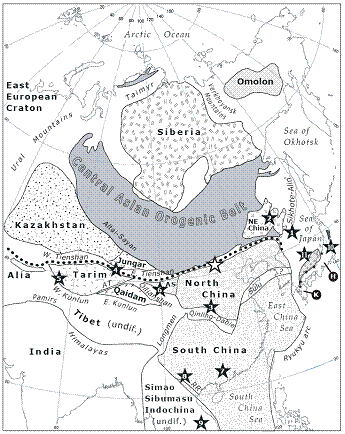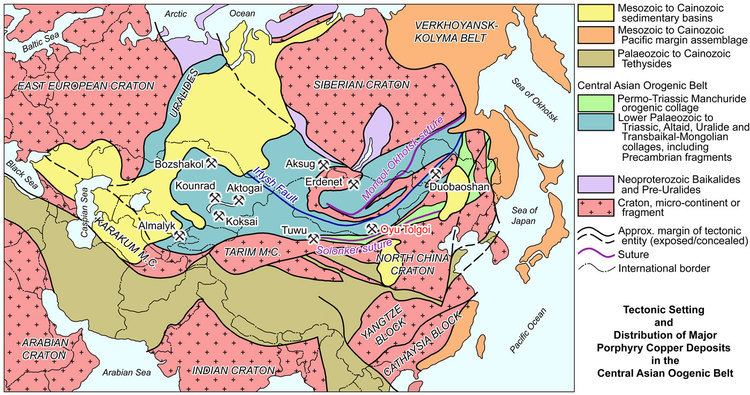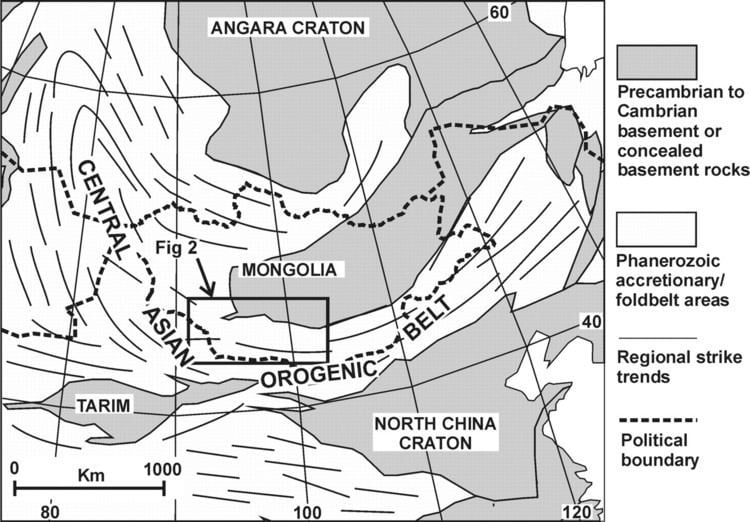 | ||
The Central Asian Orogenic Belt (CAOB, also known as Altaids) is one of the largest accretionary orogens on Earth and evolved over some 800 million years from the latest Mesoproterozoic to the early Triassic. It contains a record of geodynamic processes during one of the most important episodes of continental growth in Phanerozoic time.
Contents
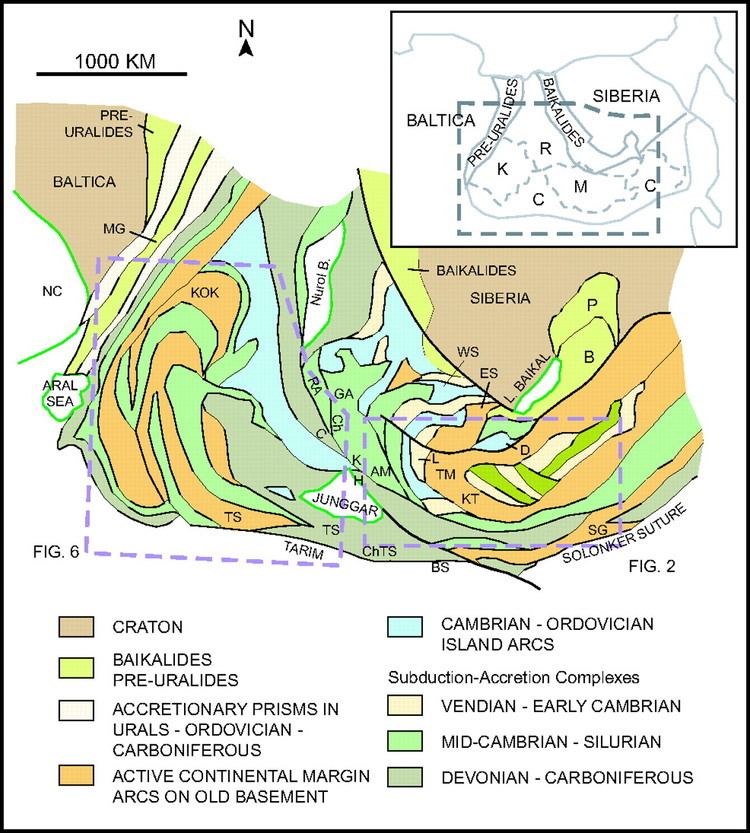
Location
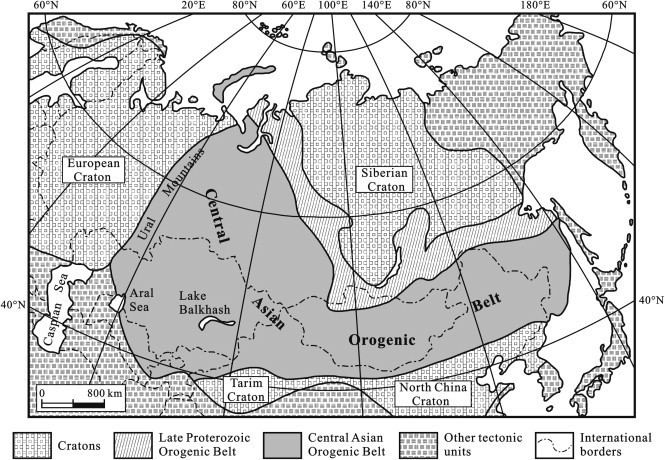
The CAOB stretches from the Ural Mountains to the Pacific Ocean, occupying an area of about 5.3 million square kilometers, about 11% of the Asian surface area. It is bounded on the north by the Siberian craton and on the south by the North China craton and the Tarim craton, which provides substrate for the Tarim Basin. The CAOB encompasses parts of six nations: China, Mongolia, Russia, Kazakhstan, Kyrgyzstan, and Uzbekistan. It includes mountain ranges north of Tibet, including the Tian Shan (Chinese for "heavenly mountains") where a good example of Paleozoic arc accretion is exposed. The Altai Mountains of Russia, Kazakhstan, northwest China and western Mongolia also expose a complex accretionary terrane. CAOB rocks are also well exposed in Kazakhstan, the South Gobi Range of southern Mongolia, the Beishan and Inner Mongolia of northern China, the Sayan Mountains of southern Siberia just north of Mongolia, the ranges of Buratia in southern Siberia south of Lake Baikal, and in the Far East of China and Russia.
Geologic evolution
There has been much discussion about the tectonic evolution of the CAOB over the last two decades, and these interpretations fall into two general groups.
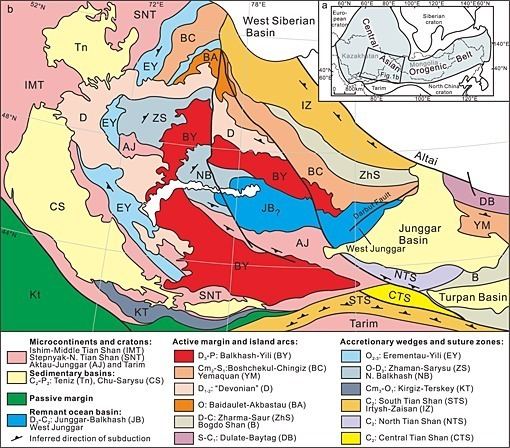
One group of researchers suggests that the belt grew, in the Neoproterozoic and Palaeozoic, from the margin of the Siberian craton to the south through accretion of island arcs and Precambrian continental blocks until the evolution was terminated through collision with the North China and Tarim cratons in the latest Paleozoic to early Mesozoic. The original paleogeographic position of the continental blocks is debated, but some studies suggest a Gondwana affinity of many allochthonous terranes, whereas others infer a Siberian or Tarim origin for the same blocks . The second group of researchers regards the CAOB as mainly composed of a huge Paleozoic subduction-accretion complex, which accumulated against a single, long magmatic arc.
The CAOB, like other major accretionary orogens, consists of:
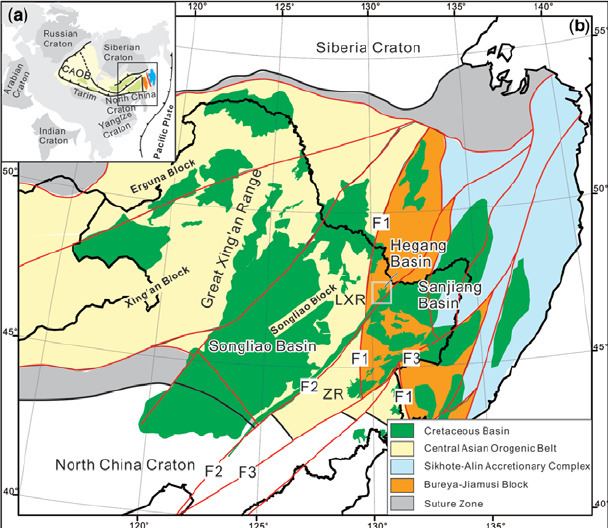
- accretionary wedges;
- island arc, forearc and back-arc systems, largely dismembered ophiolites, oceanic plateaux;
- blocks of older continental crust, ranging in age from Archaean to Neoproterozoic;
- synorogenic granite and metamorphic rocks including exhumed HP-UHP metamorphic rocks,
- clastic sedimentary basins;
- Permian post-collisional granitoids and intraplate igneous suites. Large-scale late Paleozoic shear zones follow the orogenic grain.

There are many controversies about CAOB tectono-magmatic evolution. One is the problem of juvenile versus recycled crust in the formation of CAOB igneous rocks. On one hand, the CAOB is considered to be the most important site of juvenile crust formation since the Neoproterozoic, because during its amalgamation, which involved terrains of different geodynamic origin overlain by magmatic units, massive amounts of granitic magmas were generated with juvenile Nd isotopic signatures. However, recently obtained detrital and xenocrystic zircon ages confirmed an important role for older crust in the orogen's evolution.
The modest Neoproterozoic and huge early-middle Paleozoic zircon age spectra match CAOB crustal growth very well but older peaks of ~1.8 Ga and ~2.7 Ga suggest the involvement of older crust.
